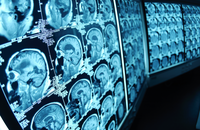Brain Growth

Something strange happened to our ancestors. Between about 100,000 to 35,000 years ago, their brains began to grow enormously.
There have been many theories as to why this happened, from climatic change to a change in diet. Some foods contain chemicals that can stimulate the growth of neurons. And yes, there are also those who claim that some external agency caused the sudden growth of the brain, a la Arthur C. Clarke’s 2001: A Space Odyssey.
But what is exciting is that the growth in the brain may still be going on today.
It is clear that the brain is constantly changing. This growth, change, development and regression does not only occur during development, learning or aging, but also over generations. It is often said that the modern human brain is identical to that of Stone Age man, but that is almost certainly not true. If you were to meet a person from 5,000 years ago, they would probably seem quite unintelligent, because all the things that you have learned have stimulated your cognitive abilities. This stimulation also stimulates the formation of the brain. Recent studies of the genetics underlying brain development have shown that the human brain has changed significantly over the last few thousand years.
A study in the journal Science has taught us something new. The investigators studied the gene Microencephalin (MCPH). When the gene is active it causes a severe reduction in brain size coupled with mental retardation. Remarkably, despite this abnormality, there is an overall retention of normal brain structure and a lack of overt abnormalities outside of nervous system. The function of MCPH in healthy humans is less well known.
What makes this study interesting is the finding that the MCPH has changed during the past ~37.000 years, and that the spread has been fast: there has been a strong positive selection for this gene, indicating that the brain has continued to evolve even in more recent times. This is exceedingly important. I have many times emphasized that human beings are changing extremely rapidly.
There is no reason to assume that the evolution of the brain has stopped, and there is every reason for thinking that this gene is one of the mechanisms of change in response to the environment. It is now key to understand all the modulators of MCPH activity. Is it food, stress or environmental stimuli?
Another recent study in the journal Nature analyzed human chromosome 8, and looked specifically at two regions called the major defensin (DEF) gene cluster and MCPH1. The authors also speculated that these regions have played a significant role in the expanded brain size that can be observed through hominid evolution.
At the end of the article, the authors say something very interesting:
“The majority of the genes in the region of high divergence in distal 8p play important roles in development or signaling in the nervous system. Notably, the extremely large CSMD1 gene, which lies at the peak of divergence and diversity, is widely expressed in brain tissues. High regional mutation rates and positive selection are generally assumed to be distinct, but it is possible that the former may facilitate the latter by increasing the rate of appearance of potentially advantageous single, or interacting, alleles. It is intriguing to speculate whether the accelerated divergence rate of this region has contributed to the rapid expansion and evolution of the primate brain.”
For people who are less familiar with this kind of science-speak, let me translate. The study of chromosome 8 should open a whole new field of enquiry about what makes the human brain special. Comparing this region with DNA from other species and from early humans, we will be able to study the relative contribution of these genes to brain size.
Though size isn’t everything (!). The key is to understand the impact of changes in brain size and brain complexity on cognitive processes. In general, there’s a good correlation between intelligence and the volume and complexity of specific regions of the brain.
These new genes and their rapid – and continuing – spread is fascinating. But there are some other things that also differentiate the “naked ape” from other primates. One of the most striking is the large amount of fat that we have in out subcutaneous tissues and in our brains. We also have more of the excitatory amino acid glutamate in our cerebral cortices than chimpanzees or gorillas.
There is much more to be learned, but the consequences for understanding our origins and potential treatments for neurological illnesses are just stunning.






